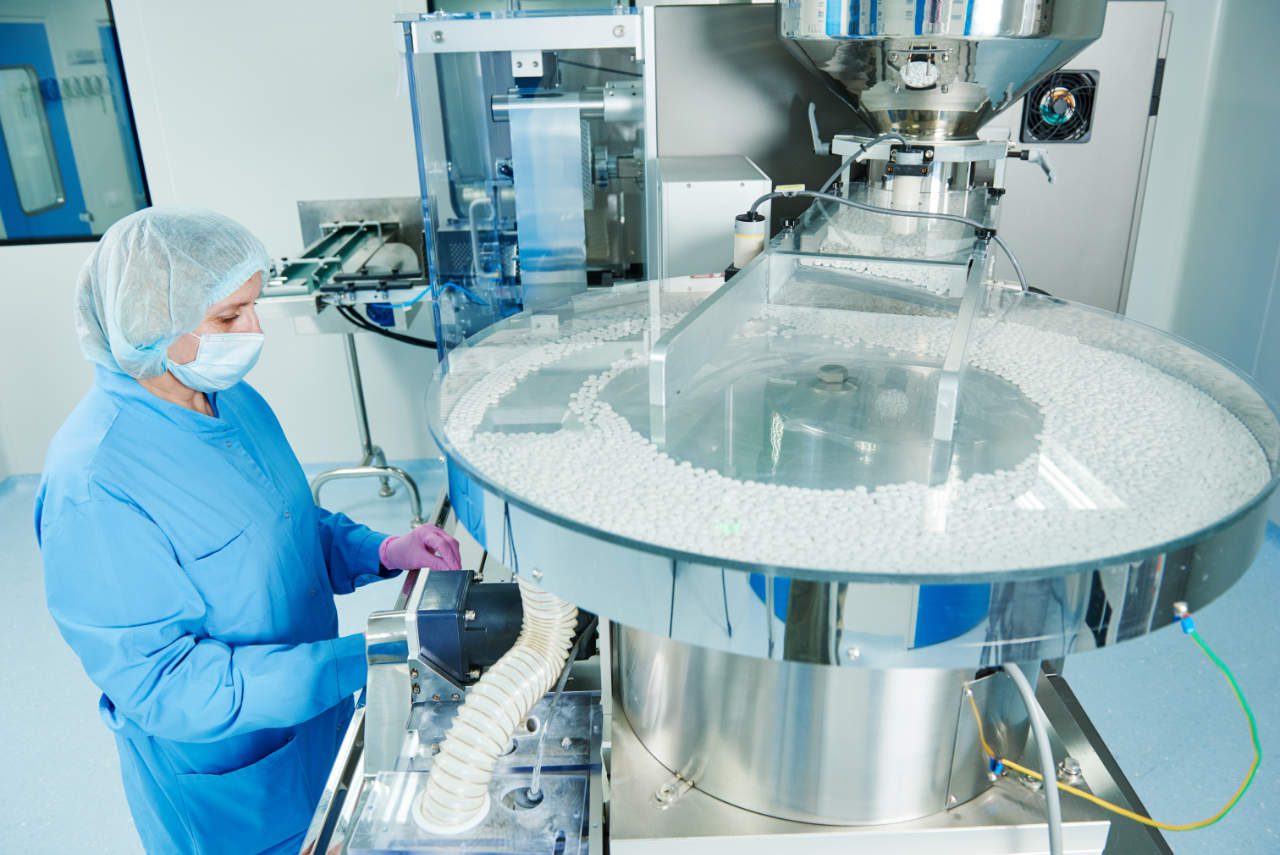Ireland has a vibrant and highly successful pharmaceutical industry – and it is a leading force in developing, producing and exporting pharmaceutical products. According to the Irish Pharmaceutical Healthcare Association, the pharmaceutical industry is Ireland’s economic export powerhouse, generating half of Ireland’s exports and directly employing 42,000 people. The scale and scope of the industry mean that pharmaceutical risk management is a critical pillar in the safe production and export of pharmaceutical products.
It’s also an industry with a wide variety of health and safety risks, from unique challenges involving handling hazardous materials, chemical interactions and secure storage to transportation safety and the risk of releasing harmful toxins into the environment.
Employees involved in the pharmaceutical production process – from laboratory workers to transportation and shipping personnel – can be exposed to many risks to health. Having an effective occupational health and safety (OH&S) management system in place can help ensure employers meet important regulations such as the Safety, Health and Welfare at Work Act 2005 and the Safety, Health and Welfare at Work (Chemical Agents) Regulations 2001, along with its 2015 Amendments and 2021 Amendments.
Organisations can demonstrate their commitment to health and safety with ISO certification such as ISO 45001, which is designed to support organisations improve OH&S effectiveness and reducing workplace harm and ill-health. Related standards such as ISO 13485, a quality management standard that relates to the design, manufacture and installation of medical devices, can also play a role in demonstrating a holistic approach to health, safety and quality.

Pharmaceutical risk management – what are the risks?
As well as typical workplace risks such as slips, trips and falls or working at height, laboratory settings involving chemicals and toxic substances that have their own risks to health and safety.
Laboratory setting risks can include:
- Chemical hazards – risks can include incorrect handling, storage and chemical interactions resulting in fire, toxins and explosions.
- Biological hazards – including exposure to harmful toxins, pathogens and biological agents.
- Equipment safety – such as incorrect use of PPE through to injury risks from equipment such as centrifuges, cryogens and compressed gases.
- Radiation hazards – including the use of radioactive materials and radiation equipment and both non-ionising and ionising radiation.
- Physical hazards – such as slips, trips and falls due to spillages or equipment, excessive noise levels and dangers posed by electrical equipment.
Risks aren’t confined to laboratory staff, either. Organisations need to evaluate and control risks relating to the exposure of toxins, for example, to the wider public or to support staff and contractors.
Pharmaceutical risk management strategy
Premises involved in pharmaceutical activities, from laboratories to storage facilities, are highly regulated. Professional expertise from a qualified pharmaceutical health and safety practitioner should always be vital to any pharmaceutical risk management strategy. Managing workplace occupational health and safety can be effectively controlled with an OH&S management system deployed, used and continually improved in line with ISO 45001 standards.
While each business should develop its own pharmaceutical risk management strategy relevant to its specific needs, some approaches and risk management tools in the pharmaceutical industry can work as a general occupational health and safety framework aligned to the activities of pharmaceutical businesses.
1. Risk assessments
Performing regular, robust and rigorous risk assessments can help organisations identify risks to health throughout the production process, prioritise risks and their impact, and put in place controls to mitigate or minimise risks.
Risks can be collated as part of an OH&S management system, assigned risk scores to determine likelihood and level of impact, assign owners and actions, and be used as the basis of periodic risk reviews to ensure that risks are correctly managed.
Risk assessments in laboratory settings can include activities to identify:
- Type of risk – examine working areas for potential hazards such as chemical storage and review accident reporting documentation to identify what risks exist.
- Who is at risk – determine who might be harmed, such as laboratory staff operating hazardous equipment, and the type of harm they may be exposed to, such as skin contamination or respiratory risks.
- Risk actions – decide how risks should be minimised and ideally eliminated. This can include steps to reduce the risk, who is responsible for owning the action, and when it needs to be completed.
- Record and review – Keep an accurate and up-to-date risk register and regularly review outstanding actions to ensure they are monitored and completed.

2. Ensure basic laboratory safety
Basic laboratory safety precautions must be followed by staff at all times. While each environment is different, examples of safety in the pharmaceutical industry and especially lab safety include:
- Dealing with and clearing spillages promptly.
- Ensuring correct labelling of containers.
- Following a rigorous hygiene routine such as hand washing.
- Ensuring walkways are clear of trip hazards.
- Not consuming food or drink within laboratory settings.
- Regular checking of equipment, such as spotting cracked glassware.
- Ensuring work areas are tidy.
- Tying back hair and wearing suitable clothing that doesn’t expose skin.
Employers should ensure safety equipment, such as eye wash stations and emergency safety showers, are installed to reduce the risk of long-term harm from exposure to chemicals or toxins.
3. Record keeping and monitoring
Critical to reducing health and safety risks is ensuring routine and regular monitoring and record-keeping. This should cover routine safety checklists, such as checking equipment, inventory and materials storage.
Ensure records are maintained and updated, including accident and incident logs, as well as the use of materials. Ensure registers are reviewed daily and any items for action as escalated to the responsible person.
Staff should have access to essential documentation, such as safety data sheets, risk management plans and safety policy documentation. Other documentation, such as process hazards analysis (PHA) and quality assurance documents, is vital to keep up to date. An OH&S management system or ISO 9001 quality management system provides a centralised way to store, retrieve and update important documents.
4. Safety data sheets
Safety data sheets are a fundamental element of laboratory safety. These include the correct way to store and handle chemicals and any associated hazards. Provided by chemical manufacturers, they also include first aid strategies, PPE requirements and how to dispose of materials safely.
Ensure employees have access to these safety sheets and instruct staff not to work with chemicals without first reviewing a safety data sheet.

5. Employee engagement
A health and safety culture plays an active role in pharmaceutical risk management. Foster a safety-first culture through accessible routes for raising safety issues and transparency on how safety concerns are addressed. Provide clear communication through documentation, labelling and policies, and extensive use of safety signs and warnings.
Ensure staff undertake regular and routine training from qualified providers. Our ISO 45001 implementation training and ISO 45001 internal auditor training can support organisation OH&S effectiveness.
Learn more about our ISO certification services, including details on achieving ISO 45001 certification as part of your approach to controlling and eliminating health and safety risks within a pharmaceutical organisation.



